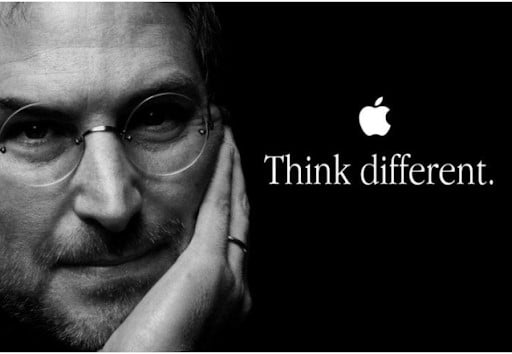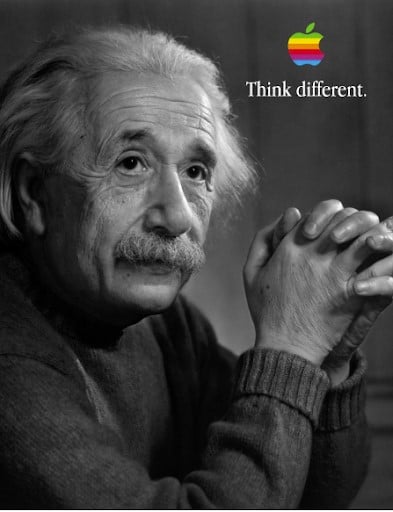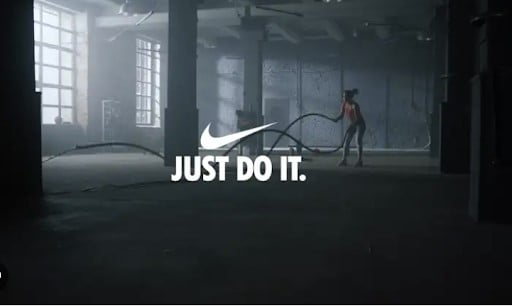What is Brand Copywriting? (+ Examples of Amazing Brand Copy
Willy Wood
Brand copywriting is more than just words on a page; it’s the voice of your brand.
As a digital marketer, copywriter, or entrepreneur, understanding the nuances of brand copywriting is crucial in establishing a compelling and memorable brand identity. It’s not just about selling products; it’s about narrating a story that resonates with your audience and builds lasting connections.
In this article, you’ll learn:
- The essential definition and role of brand copywriting in modern marketing
- Practical tips for crafting effective brand copy
- Insights from three remarkable examples of successful brand copywriting
Let’s dive into the world of brand copywriting, where every word counts in shaping the perception and success of your brand.

What is Brand Copywriting?
At its core, brand copywriting is the art and science of crafting the written content that represents a brand’s voice and messaging. It’s a strategic approach to writing that not only aims to persuade and sell, but also to establish a brand’s identity and values in the minds of its audience.
Brand copywriting isn’t confined to just advertisements or product descriptions; it extends to all forms of communication, from website content and social media posts to email campaigns and packaging. Any and all copy that a company puts out into the world contributes to the impression readers have of that company.
The power of brand copywriting lies in its ability to create a consistent and relatable voice that resonates with a target audience.
This form of writing goes beyond mere slogans or catchy phrases. It involves a deep understanding of a brand’s audience, their needs and preferences, and how the brand’s products or services can meet those needs.
Effective brand copywriting communicates not just what a brand offers, but also what it stands for, creating a strong emotional connection with its audience. As such, a good brand copywriter also communicates the company’s mission and values with every piece of copy they produce.
A well-crafted brand message can differentiate a company in a crowded marketplace, turning casual browsers into loyal customers. It’s about telling a story that aligns with the audience’s beliefs and values, making the brand not just a choice, but a part of their identity.
How Do You Write Effective Brand Copy?
Writing effective brand copy is a deliberate process that requires both creativity and strategic thinking.
Since many types of copy combine to create a company’s brand voice, the copy on the company’s website, the copy in the company’s social media channels, the company’s email copy, and the company’s product descriptions and sales copy all must speak with the same voice and send a consistent message. This can be challenging, but it’s doable if you follow a few proven guidelines.
Here are some helpful tips to help you craft compelling brand copy:
- Understand Your Brand’s Core Values and Personality: Start by defining what your brand stands for. What are its core values? What personality do you want to convey through your words? Whether it’s friendly and conversational or formal and authoritative, your brand’s personality should shine through in every piece of copy you write.
- Know Your Audience: Effective brand copy resonates with its intended audience. Which means that you can’t write effective brand copy without knowing your audience deeply. The key is to conduct thorough research to understand your audience’s demographics, pain points, desires, and language. The more you know about them, the more targeted and impactful your copy will be.
- Craft a Unique Value Proposition: Your value proposition should succinctly convey what makes your brand different and better than the competition. It’s not just about the features of your product or service, but the benefits and experiences it offers to the customers. This is another case where some good, old-fashioned research is crucial. Analyze what your closest competitors are saying to and offering your shared audience so you can differentiate yourself from the pack.
- Use a Consistent Tone of Voice: Consistency in tone helps in building brand recognition. Your tone should closely match the mission and values of your company. Whether that’s serious, playful, inspirational, or educational, ensure that the tone of your brand copy remains consistent across all platforms and pieces of content you produce.
- Show, Don’t Tell: Use storytelling to create an emotional connection with your audience. Instead of just listing product features, tell a story that illustrates the benefits and experiences your brand can deliver. There are many ways to work storytelling into your brand copywriting, including personal stories, third person stories from popular culture, and your customers’ own stories through testimonials and case studies.
- Be Clear and Concise: Clarity is key in brand copywriting. Avoid jargon and complex language. Your message should be easily understandable to ensure it resonates with your intended audience. If you have voice of customer (VOC) data from interviews, surveys, and other sources, make sure that you use your audience’s own language when communicating with them. When your ideal customer reads your copy, they should say to themselves, “It’s like you’re in my head, reading my mind!”
- Incorporate SEO Best Practices: While maintaining your brand voice, you also need ensure that your copy is optimized for search engines. Use relevant keywords naturally, so your content ranks higher and reaches a wider audience. After all, the best copy in the world can’t make an impact if no one sees it.
- Test and Refine: Finally, always test different versions of your copy. Use A/B testing to see what resonates best with your audience and continually refine your approach based on feedback and results.
By following these best practices, you can create brand copy that not only captures the essence of your brand, but also deeply connects with your audience.
What are Some Great Examples of Brand Copywriting?
To truly understand the impact of great brand copywriting, you have to see it in action. So, let’s explore three real-world examples. Each of these examples demonstrates how powerful and effective brand copy can be in creating a memorable brand identity and connecting with the audience. The first two examples are well-known classic examples of brand copywriting. The last one is an example of great personal branding.
Example 1: Apple, “Think Different”
Analysis: Apple’s iconic “Think Different” campaign ran from 1997 to 2002 and still stands as a masterclass of brand copywriting. It’s succinct, yet it perfectly encapsulates Apple’s ethos of innovation and individuality.
The phrase “Think Different” was carefully chosen. First, it was a response to IBM’s earlier slogan, “Think.” Also, Steve Jobs insisted that the slogan be “Think Different,” not “Think Differently,” (which was briefly considered) because he wanted it to read as both an adverb and a noun (as in “think victory” or “think beauty”).

The campaign consisted of two TV ads, one 60 seconds and one 30 seconds. The longer ad showed black-and-white footage of 17 iconic 20th century personalities while the script was read. These personalities included Albert Einstein, Bob Dylan, Martin Luther King Jr., Richard Branson, John Lennon (with Yoko Ono), Buckminster Fuller, Thomas Edison, Muhammad Ali, Ted Turner, Maria Callas, Mahatma Gandhi, Amelia Earhart, Alfred Hitchcock, Martha Graham, Jim Henson (with Kermit the Frog), Frank Lloyd Wright, and Pablo Picasso. The ad ends with an image of a young girl opening her eyes, as if making a wish.
Print ads were also created to supplement the TV ads and were published in many mainstream magazines. Some of these ads included the slogan and Apple products. Others included just the slogan and one of the icon personalities. Some of the historical figures represented were Jimi Hendrix, Miles Davis, Cesar Chavez, Eleanor Roosevelt, and others.

All in all, the “Think Different” campaign not only differentiated Apple from its competitors, but also resonated with a generation of consumers who wanted to stand out and think outside the box. The simplicity of the message, combined with its powerful call to action, made it one of the most memorable taglines in advertising history.
Example 2: Nike, “Just Do It”
Analysis: Nike’s “Just Do It” campaign, originally created in 1987, is another huge (and continuing) success story.

A funny backstory to this success is that the original campaign didn’t even have the “Just Do It” tagline in it. After reviewing all the various ad materials created for the campaign the night before the client presentation, Dan Wieden of the ad agency Wieden & Kennedy felt like something was missing. So he came up with the tagline and threw it into the presentation at the last minute. It was something he said he wasn’t married to and that Nike could drop it if they wanted.
But the public surprised both the slogan’s creator and Nike by adopting the tagline enthusiastically right away. Which just goes to show you that you can be the greatest brand strategist and copywriter of all time, and the audience will still surprise you from time to time (which is why you always test).
Various versions of the campaign focused on different audiences. Some focused on weekend warriors, others on hard core athletes. And one “strand” of the campaign focused on empowering young girls and young women to embrace their inner athletes.

Nike has also used the slogan at times to step into the social and political arena. Recently, when NFL player Colin Kaepernick chose to kneel during the playing of the national anthem to protest police brutality, Nike created several ads using “Just Do It” to highlight his courageous stance. While some people believed this would be a mistake from a business standpoint, it turned out that it resonated with people who, like many athletes, believe that it’s important to get out of your comfort zone and challenge not only yourself, but the status quo.

Today, the slogan is so ubiquitous in everyday life that it’s hard to avoid. Accompanied by the iconic Nike “swoosh,” it appears on bags, T-shirts, and billboards around the world.
But “Just Do It” is more than just a slogan; it’s a call to action that inspires and motivates. This simple, yet powerful phrase captures the essence of the brand’s commitment to fitness, determination, and overcoming challenges. It speaks directly to athletes and individuals who aspire to push their limits. The genius of this copy lies in its ability to be both universally applicable and deeply personal at the same time.
Example 3: Marie Forleo, Personal Branding
Analysis: Marie Forleo is an entrepreneur, author, TV personality, podcaster, and philanthropist who built a multi-million dollar business through an engaging personal brand. Unlike the two huge ad campaigns described above, Forleo’s brand is built around her personal style, personality, and brand voice.

On her website About page, she tells her own rags-to-riches story and uses it as a motivational springboard to tell others that they, too, can rise to riches, fame (if that’s what they want), and financial and lifestyle freedom by following the advice she shares in her online courses and on her various other platforms.
The most recognizable aspects of Forleo’s brand identity are her personal style of dress (stylish photos of her can be found on all of her platforms) and her colloquial writing style. These elements combine to create an image that is highly attractive to wannabe entrepreneurs, especially women.
It just goes to show you that you don’t have to have the million dollar ad budget of a large corporation behind you to create a successful brand voice.

Each of the examples above showcases the power of brand copywriting to create a strong, emotionally resonant brand identity with a targeted audience. Isn’t it amazing how a few well-chosen words can leave a lasting impact on the audience’s perception of a brand?
Harnessing the Power of Brand Copywriting
Brand copywriting is a vital component in the toolbox of any digital marketer, copywriter, or entrepreneur. It’s not just about creating catchy slogans or persuasive product descriptions; it’s about crafting a narrative that embodies the essence of your brand and connects deeply with your audience.
The examples of Apple, Nike, and Marie Forleo demonstrate how powerful brand copywriting can shape a brand’s identity and leave a lasting impression on consumers.
As you embark on your journey to master brand copywriting, remember that it’s an ongoing process of learning, experimenting, and refining. The next natural step could be exploring advanced copywriting techniques or delving deeper into specific case studies of successful brand campaigns.
If that’s the case for you, we highly recommend these resources:
The 11 Best Copywriting Courses for 2024
10 Amazing Creative Copywriting Examples for 2024
21 Best Copywriting Books for Crafting Compelling Copy
The 15 Best Copywriting Blogs All Writers Should Follow
By continuously honing your skills and understanding, you can create brand copy that not only resonates with your audience but also elevates your brand to new heights.
And if you’re a business owner who would love to do your own copywriting, but you simply don’t have the time, there is an alternative to hiring full-time staff writers to do it for you.
Mirasee’s MIST Digital agency can provide you with copywriting services (and much more) on an ad hoc basis, allowing you to tap into resources you probably never thought you could afford for a fraction of what an in-house copywriter would cost.
Elevate Your Copywriting Game!
Discover winning strategies and insider tips for writing words that sell - from Mirasee’s very own expert copywriting team!